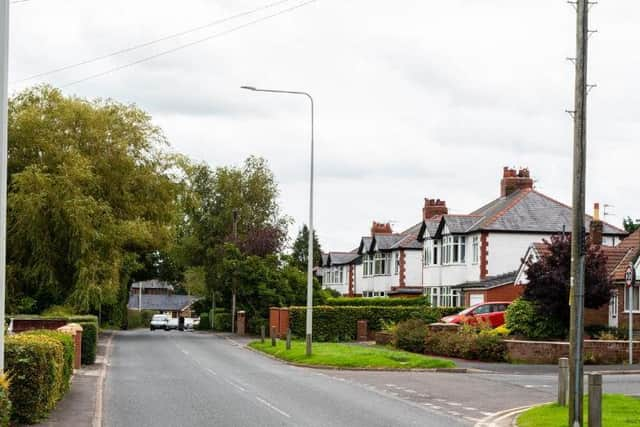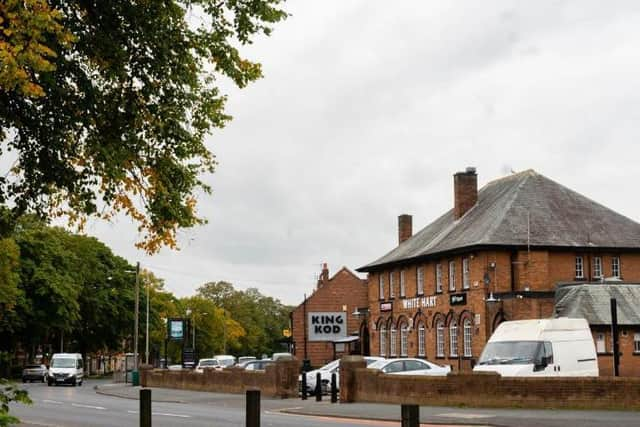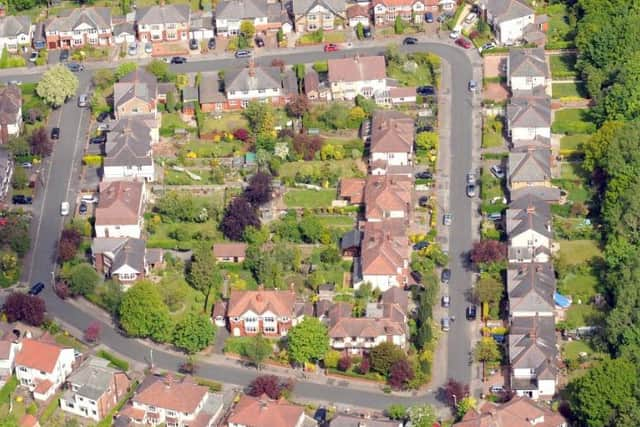The Preston neighbourhoods with the highest death rises during pandemic revealed
and live on Freeview channel 276
Data published by the Office for National Statistics comparing the number of deaths registered during the pandemic to a baseline from previous years shows some areas of the country were significantly more affected than others.
The Health Foundation said the virus has laid bare inequalities across England and Wales, with poor health, deprivation and stretched public services to blame for increased exposure.
Advertisement
Hide AdAdvertisement
Hide AdIn the 14 months to the end of April, there were 1,748 deaths registered in Preston – 285 (19.5 per cent) more than the 1,463 predicted, according to the ONS figures.


And of the deaths, 311 had Covid-19 listed as the main cause – however, many Covid-related deaths at the start of the pandemic may have been undiagnosed, the ONS cautioned.
A further breakdown for Preston, released for the first time, also reveals which of the area’s 17 neighbourhoods had the highest and lowest excess death rates during the pandemic.
The measurement compares the number of deaths registered during the period with how many were predicted based on previous mortality rates between 2014 and 2019.
Advertisement
Hide AdAdvertisement
Hide AdIn Preston, the neighbourhoods with the highest excess death rates were:


Broughton and Wychnor – 106 deaths, 42 (65.6 per cent) more deaths than expected, and including 17 with Covid-19 listed as the main cause
St George’s – 60 deaths, 20 (50 per cent) more deaths than expected, including 16 due to Covid-19
Brookfield and Holme Slack – 165 deaths, 47 (39.8 per cent) more deaths than expected, including 28 due to Covid-19
Advertisement
Hide AdAdvertisement
Hide AdWhereas, the neighbourhoods with the lowest excess death rates were:


Plungington and University – 75 deaths, the same number as expected, and including 11 with Covid-19 listed as the main cause
Fulwood – 93 deaths, seven (8.1 per cent) more than expected, including 19 due to Covid-19
Longsands – 147 deaths, 12 (8.9 per cent) more than expected, including 28 due to Covid-19
Advertisement
Hide AdAdvertisement
Hide AdDr Sakthi Karunanithi, Director of Public Health for Lancashire County Council, said the evidence shows that the age of residents is the most important risk factor of dying as a result of catching covid.


He told the Post: "Being old, living in a deprived area and indeed from an ethnic minority background are all high-risk factors and not having two doses of the vaccine for catching Covid-19 and subsequently becoming severely ill or dying.
"However, the reasons are often complex and vary from person to person. As the statistics show, we have sadly lost a great number of people here in Lancashire to Covid-19 across a range of communities, including affluent ones.
"Cases of Covid-19 remain high in Lancashire, and we are also beginning to see a rise in a number of districts, including a rise in the over 60 population. Thanks to the Covid-19 vaccine, we do not expect this to translate into the high number of deaths that we have seen previously.
Advertisement
Hide AdAdvertisement
Hide Ad"However, there are still a sizeable number of people who are not yet vaccinated, and in addition, being double jabbed does not make you immune from catching the virus. This is why my advice is to continue to take sensible steps to limit the spread of the virus within our community, such as washing hands regularly and wearing face masks in crowded places.
"It is vital that we get everyone who is eligible double jabbed as soon as possible, as this will significantly reduce the chance of hospitalisation and death. It will also reduce the chance of spreading the virus to others and reduce the possibility of further variants emerging."
In its Covid-19 Impact Inquiry report, the Health Foundation said people aged under 65 living in the most deprived areas were almost four times more likely to die from the virus, compared to those in the most affluent.
It found those in poor health, cramped housing conditions and some working environments faced an increased risk of exposure.
Advertisement
Hide AdAdvertisement
Hide AdWith the rules on self-isolation are set to change on Monday, Dr Andrew Furber, Regional Director of Public Health England North West, urges people not to drop their guard and carry on protecting each other.
He said: “These changes signal a positive step forward and one that will be welcomed by many, as adults and children will be free to return to work, attend school, and meet friends and family.
“Vaccination is breaking the link between infection and serious illness and so restrictions are easing further. But we can’t rest on our laurels just yet. The pandemic is far from over and cases are still high and pose a serious public health risk.
“Although two doses of vaccine will greatly reduce your own risk of becoming unwell, it is still possible to contract the virus and pass it to others.
Advertisement
Hide AdAdvertisement
Hide Ad“Therefore, as we move forward and legal restrictions are lifted, we still need to carry on being careful and protecting each other while cases remain high.
“It’s about striking the balance - keeping life moving whilst learning to live with coronavirus.
Across England and Wales, the ONS reported that two periods over the 14 months – March 2020 to July 2020 and September 2020 to March this year – saw the highest rates for excess deaths.
In Preston, the highest number of excess deaths came in April last year when there were 73.
Advertisement
Hide AdAdvertisement
Hide AdThe Department of Health and Social Care said increasing vaccine uptake was a “key step” to addressing the disparity of outcomes for those who catch Covid.
Thanks for reading. If you value what we do and are able to support us, a digital subscription is just £1 per month for the first two months. Try us today by clicking here.
Comment Guidelines
National World encourages reader discussion on our stories. User feedback, insights and back-and-forth exchanges add a rich layer of context to reporting. Please review our Community Guidelines before commenting.